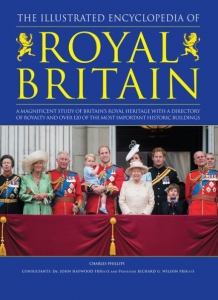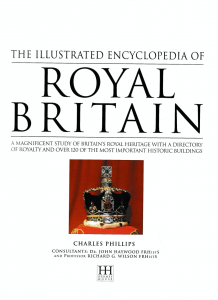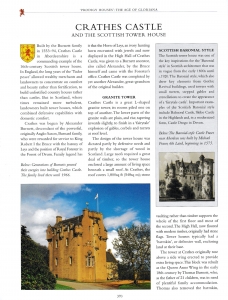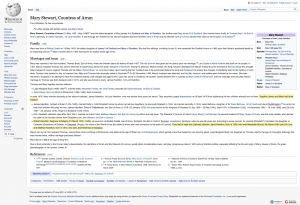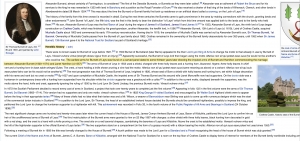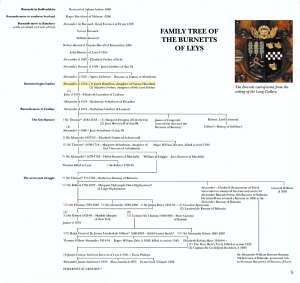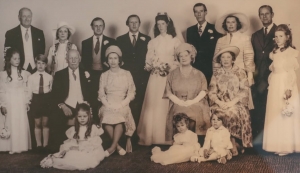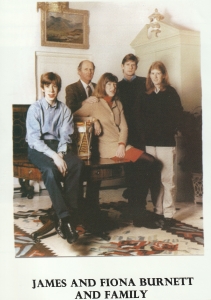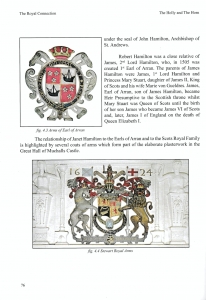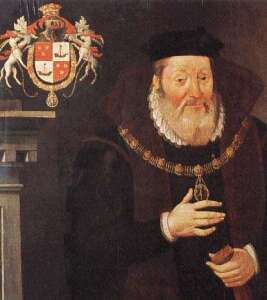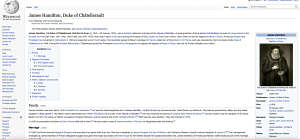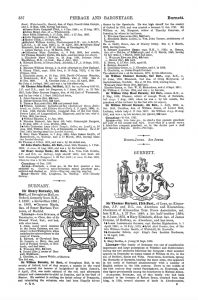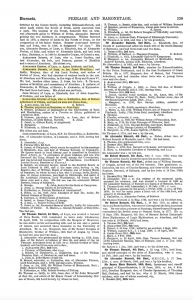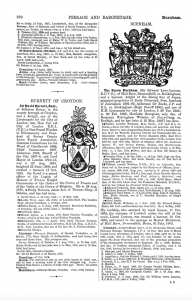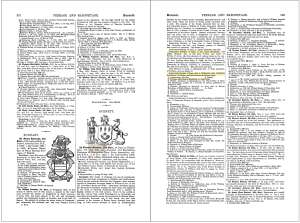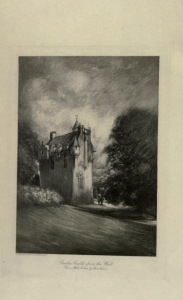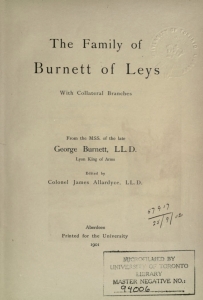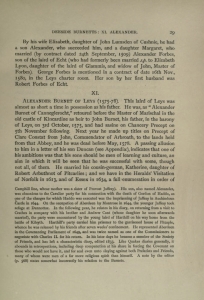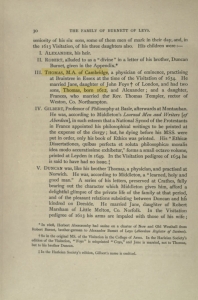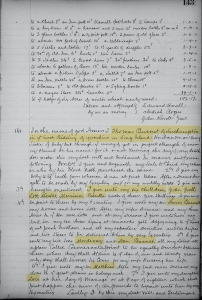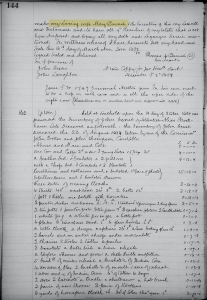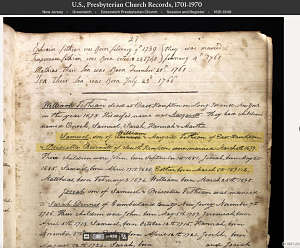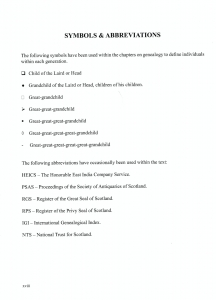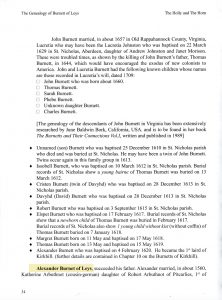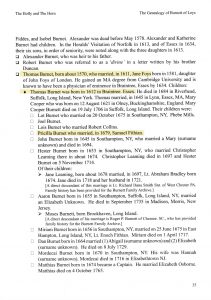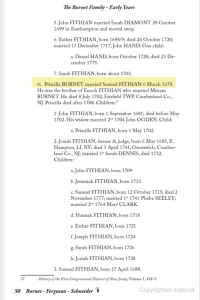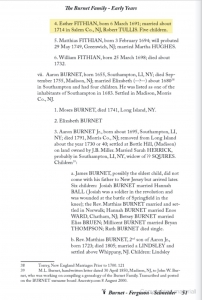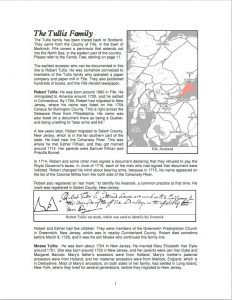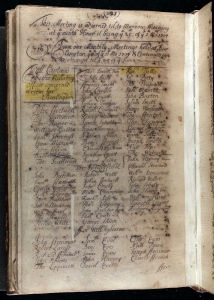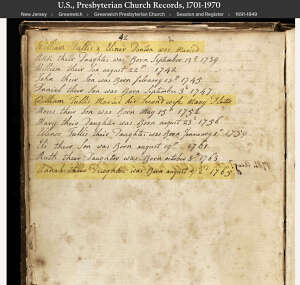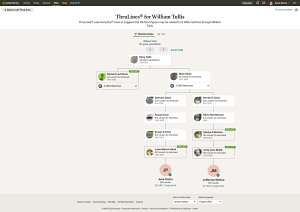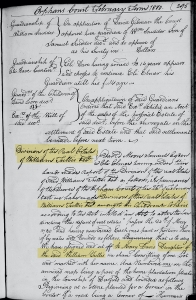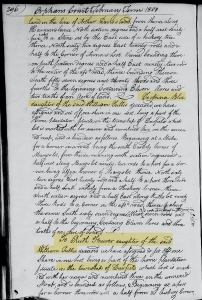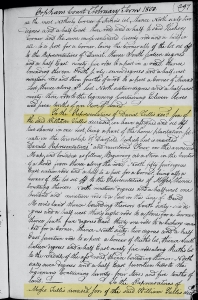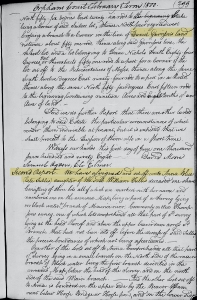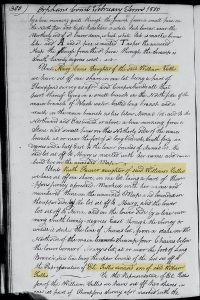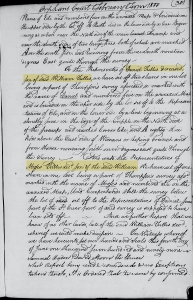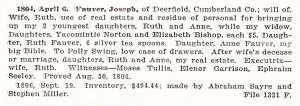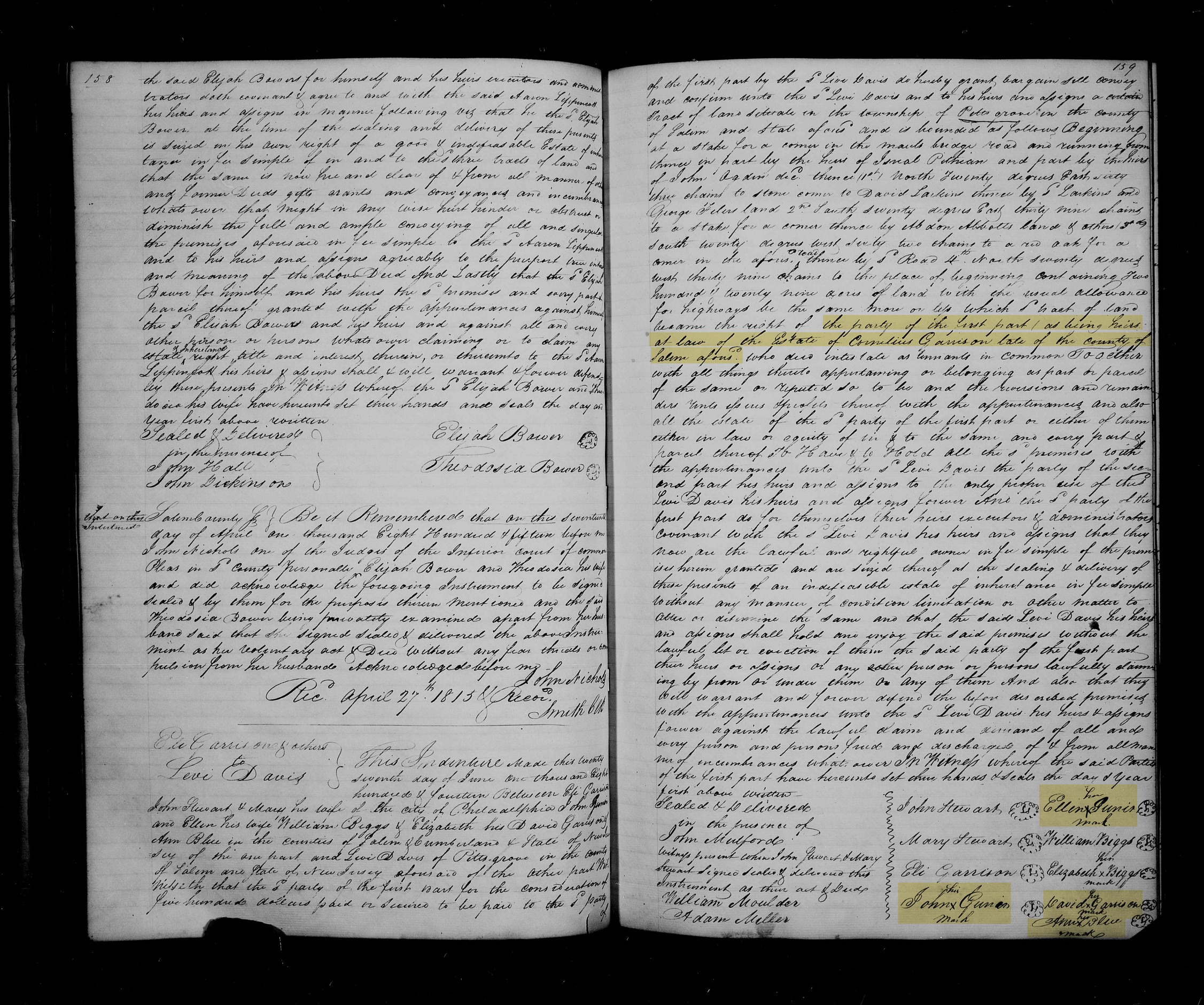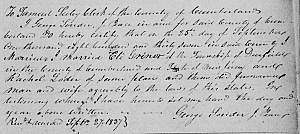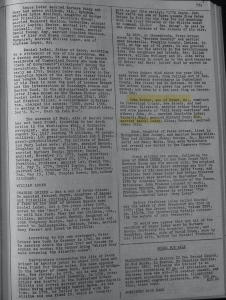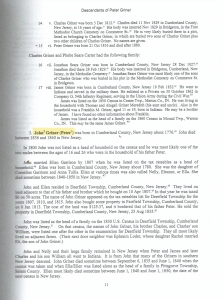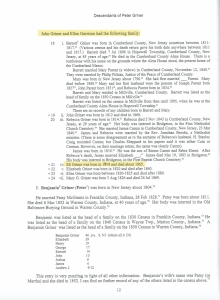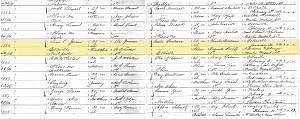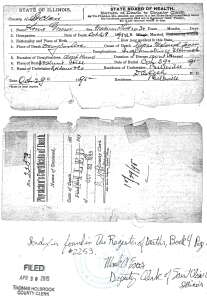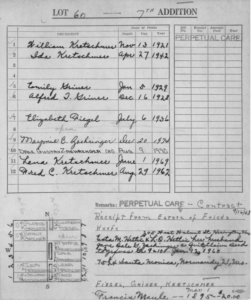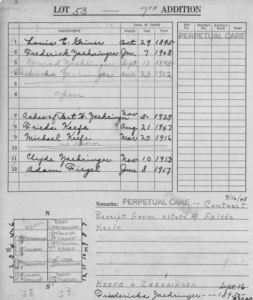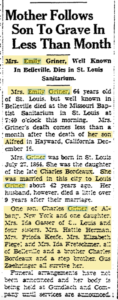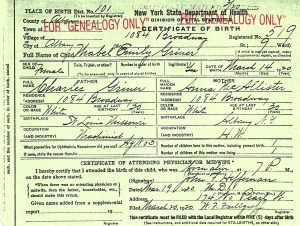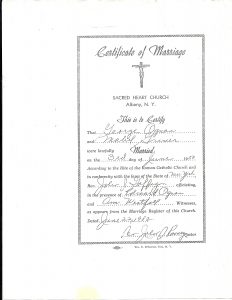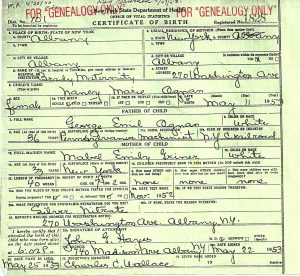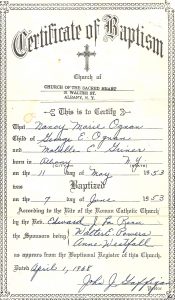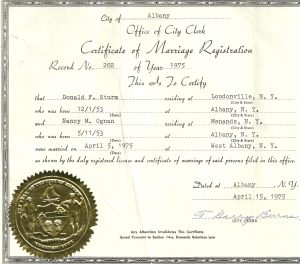Ancestral Connection to King Edward III of England Explained
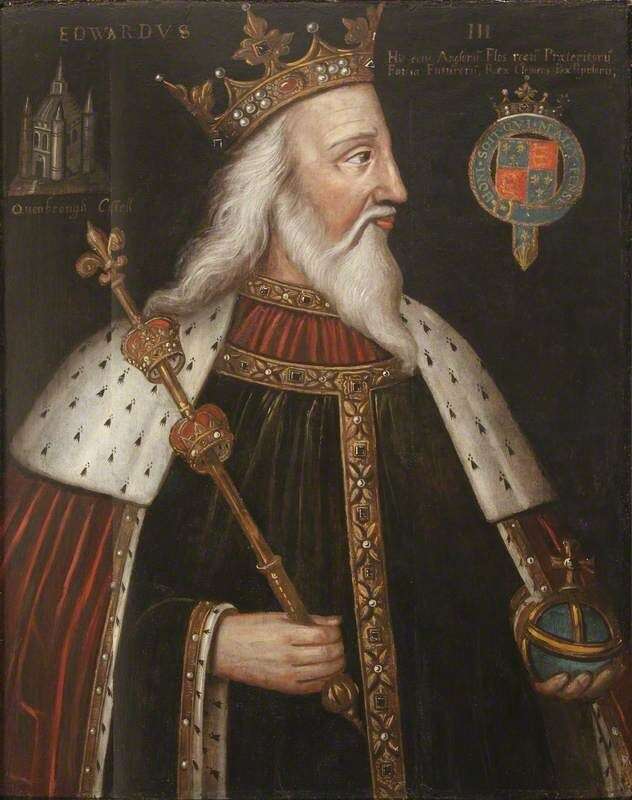
(1312 – 1377)



King Edward III of England is my 20th great-grandfather on my mother’s side of her family. My mother’s maternal grandfather Charles Berdeaux Griner (1889-1964) was one the 5th great-grandson of Priscilla Burnett of Leys of the House of Burnett with royal ancestry.
Priscilla Burnett of Leys was the member of Burnett of Leys family and one of great-granddaughters of Alexander Burnett, 11th Laird of Leys and the Hon. Katherine Arbuthnott of Fiddes their ancestral home was at Crathes Castle in Aberdeenshire, Scotland.
Both Alexander Burnett, 11th Laird of Leys and his wife, Lady Katherine Arbuthnott of Fiddies were first cousins and both of them were the grandchildren of Alexander Burnett, 9th Laird of Leys of Leys and Lady Janet Hamilton of the House of Hamilton.
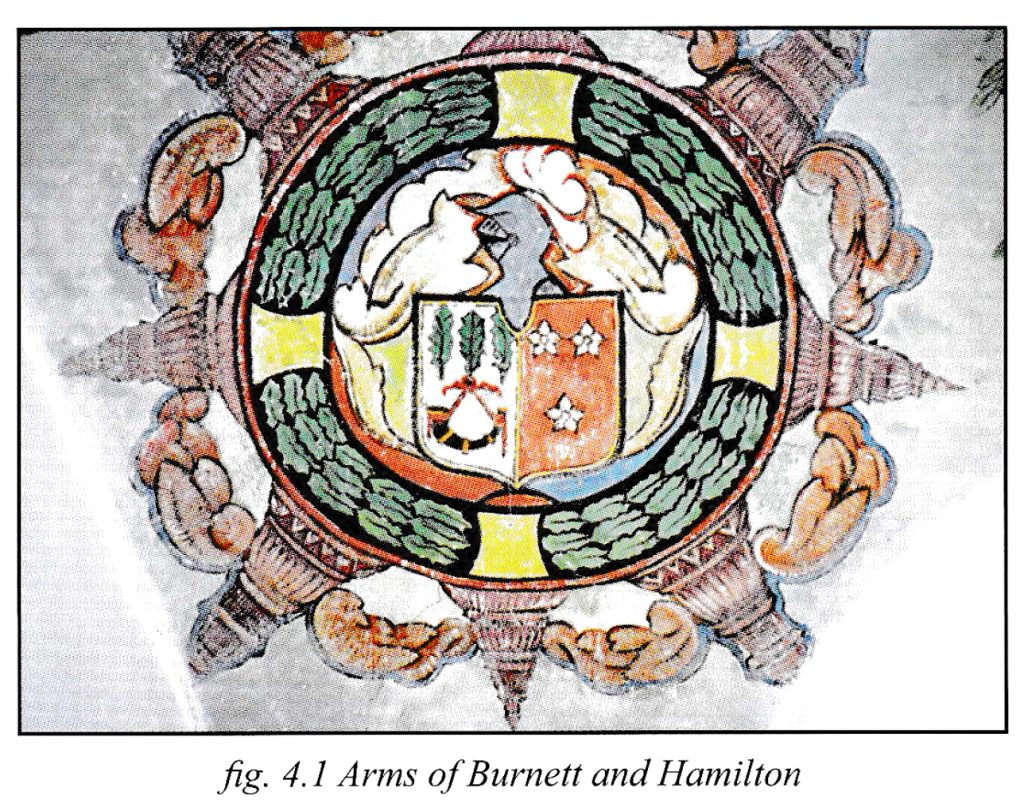
Edward III, the eldest son of Edward II and Isabella of France, was born in 1312. Edward was only fourteen when his father was murdered and for the first three years of his reign was under the influence of his mother and her lover, Roger Mortimer. This ended in 1330 when Edward had Mortimer executed and his mother removed from the royal court.
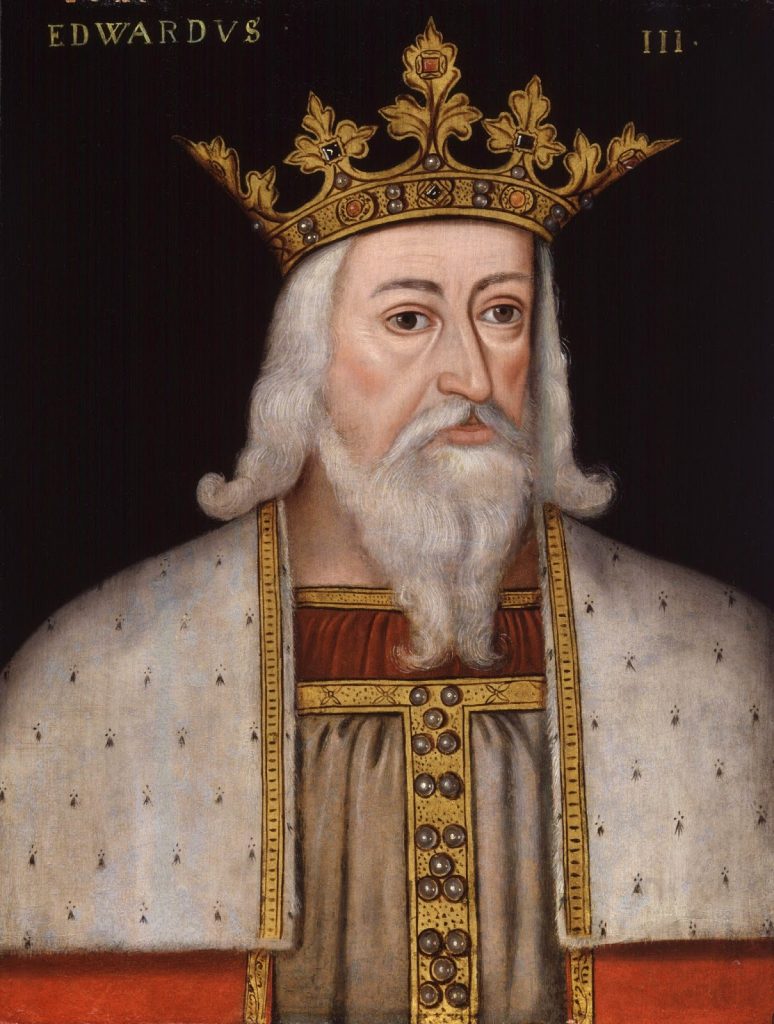
Edward III married Philippa of Hainault. The couple had twelve children, nine of whom survived: Edward, the Black Prince, Isabella, Joan, Lionel (Duke of Clarence), John of Gaunt (Duke of Lancaster), Edmund (Duke of York), Mary, Margaret, and Thomas (Duke of Gloucester).
A good leader of soldiers, Edward III was soon avenging the defeats suffered by his father in Scotland. In 1333 Edward defeated David II of Scotland at the Battle of Halidon Hill. Five years later Edward invaded France (the start of the Hundred Years War). Edward wanted to win back land lost by King John and victories at Crecy (1346) and Poitiers (1356) turned him into a military hero. His eldest son, Edward, the Black Prince, also gained a reputation for being a great soldier.
Edward had to deal with the economic problems caused by the Black Death. Attempts to control wage levels by introducing the Statute of Labourers Act made him unpopular with the people.
By 1360 Edward was able to negotiate a deal that gave him control over nearly a quarter of France. However, the king’s wars proved expensive and when English forces suffered defeats in France during the next few years, Edward began to lose the support of the people. In 1376, Parliament rebelled against the cost of the war and refused to grant the king the money needed to continue fighting in France.
Heart-broken by the death of his son, the Black Prince, Edward’s mind began to go during the last years of his reign. John of Gaunt, took over much of the responsibility of government until Edward III’s death in 1377.
John of Gaunt, Duke of Lancaster, my 19th great-grandfather was the 4th son and 3rd surviving son of King Edward III and Philippa of Hainault.
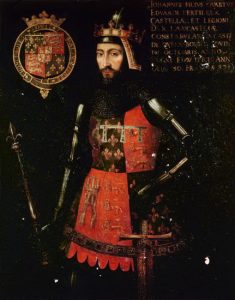
John was born at Ghent in 1340 – his birthplace supplies his name. He was tall, athletically built, appropriately gaunt of visage, clever and ambitious. His father Edward married him to Blanche, daughter and heiress of Henry, Earl and Duke of Lancaster, who was richer than the king. When Henry, who had served the monarchy dutifully died in 1362, John became Duke of Lancaster. He also became very rich indeed because of the marriage laws of that period.
His house called The Savoy stood on the banks of the Thames and was every bit as grand and luxurious as the king’s palace at Westminster. As he owned thirty castles as well he could have divided the days of the year by thirty-one and spent approximately twelve days in each of his homes – if he had so wished.
Instead, he went with his brother the Black Prince to Spain, and began his wrong but romantic association with that extraordinary country (Spain). The older brother was sick, and John replaced him as the overlord in Gascony As governor he did not achieve much, but this might well be a result of ill-planning and unrealistic expectations on the part of his father.
From the middle of the 1370s, as King Edward III became senile, and the Black Prince’s illness ended in death (1376), John of Gaunt became the virtual ruler of England, though not a popular one. During one of the mass uprisings the people of London burnt his beautiful home. On the site was eventually built a luxury hotel with the same name – The Savoy.
John’s supporters were accused of fraudulent transactions, and his attempts to regain popularity with the nobility by supporting the reformer Wycliffe only succeeded in making John even more unpopular with powerful churchmen.
It is an odd fact, given the history of England as we know it, that Gaunt never sought the throne, and he served the new young king Richard II as faithfully as he had served the old one. The fact was that he wanted the throne of Castilla, known to English historians as ‘Castile’ which is French, though Castilla and Aragon were two of the largest and most important regions of Spain (with Portugal) and had no connections with France apart from the odd marriage. Gaunt’s reasoning was solid enough for the time: poor Blanche had died of the plague in 1368, leaving a son, Henry of Bolingbroke and two daughters; Gaunt had married as his second wife Constance (or Constanza) daughter of the exiled Pedro I (el Cruel), king of Castilla. For years John claimed the throne in his wife’s name, but in vain. But he did marry his daughter Catherine (by Constance) to Henry III of Castilla, which should have meant something. His daughter Philippa married Juan (son of Pedro I of Portugal) who also became king, and thus the purest Plantagenet blood entered the bloodlines of both Spain and Portugal.
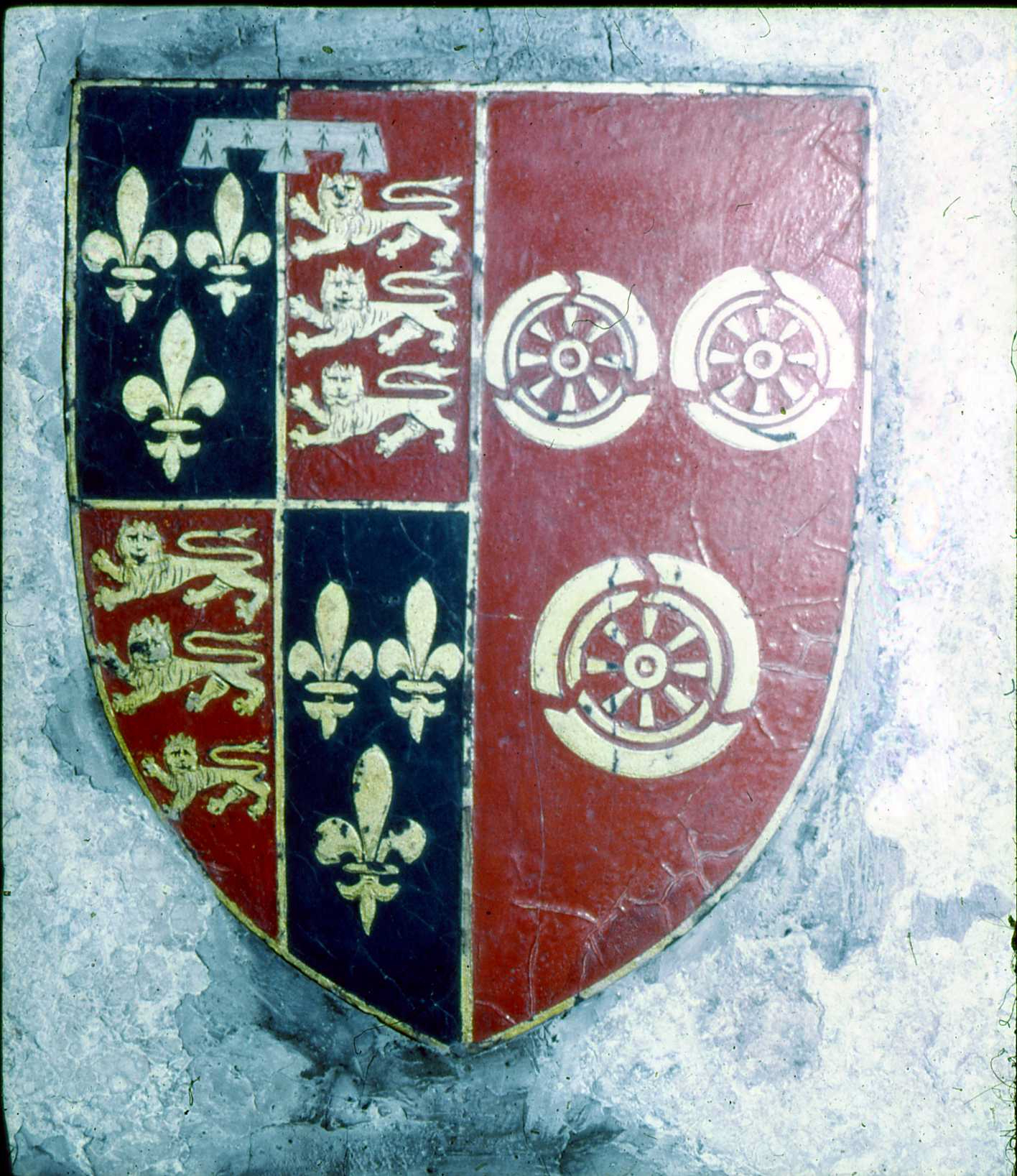
Now John was also a womaniser (who wasn’t in the fourteenth century, except Edward II, who preferred a Gascon knight). Throughout Gaunt’s marriage with Constance he was carrying on an affair with an English lady of the Court called Katherine Swynford, who was in fact governess to the daughters of his first marriage – Elizabeth and Philippa (mentioned above).
This lady had four illegitimate and recognised children by John of Gaunt who were given the surname Beaufort. This was the name of one of Gaunt’s estates in France. When the second wife Constance died the children were made legitimate by Law, but on the understanding that neither they nor their issue held any right to claim the English throne. Here is the reason why so many eminent historians doubt the constitutional legality of the crowning of Henry VII after the battle of Bosworth Field. He was the first Tudor, an Earl of Pembroke, descended from John, Earl of Somerset, the eldest of the Beauforts. Henry became king via an act of war, not because he had a legal right to the monarchy. This means that in practice Henry had usurped the throne just as Richard III had. A usurper had replaced a usurper.
John of Gaunt died in his bed in 1399; he was just fifty-nine years old.

The four children of John of Gaunt, Duke of Lancaster by his third wife, Katherine Swynford (ńee Roet) are:
- John Beaufort, 1st Earl of Somerset (1373–1410) m. Margaret Holland, Duchess of Clarence (they had six children) (my 18th great-grandfather)
- Henry Beaufort, Cardinal (1375–1447) (never married)
- Thomas Beaufort, Duke of Exeter (1377–1426) m. Margaret Neville of Hornby (had one child, a boy called Henry Beaufort, but died young.)
- Joan Beaufort, Countess of Westmorland (1379–1440) m. Ralph Neville, 1st Earl of Westmorland (they had fourteen children)
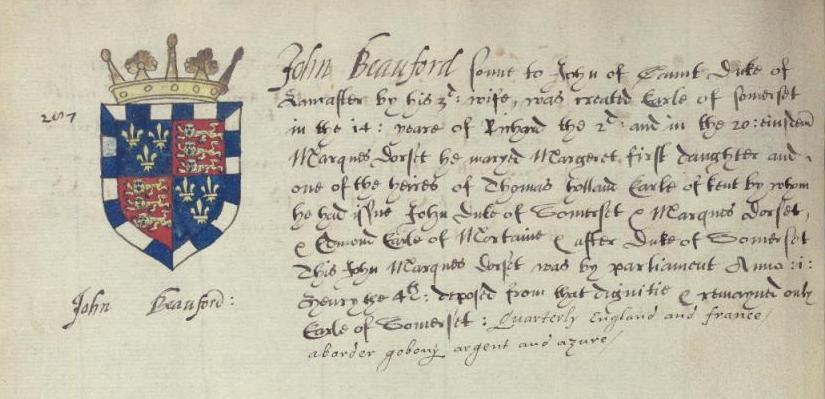
John Beaufort, 1st Earl of Somerset (my 18th great-grandfather), the eldest son of John of Gaunt, Duke of Lancaster and Katherine Swynford married Margaret Holland, Duchess of Clarence. Margaret was the daughter of Thomas Holland, 2nd Earl of Kent and Lady Alice FitzAlan, later the Countess of Kent.
John and Margaret had six children they are:
- Henry Beaufort, 2nd Earl of Somerset (1401–1418)
- Lady Joan Beaufort (d. 1445), who married James I of Scotland and Sir James Stewart, the Black Knight of Lorn (my 17th great-grandmother) i descend from her first husband, King James I of Scots
- John Beaufort, 1st Duke of Somerset (1404–1444)
- Thomas Beaufort, Count of Perche (c. 1405–1431)
- Edmund Beaufort, 2nd Duke of Somerset (c. 1406–1455)
- Lady Margaret Beaufort (c. 1408–1449), married Thomas de Courtenay, 5th Earl of Devon
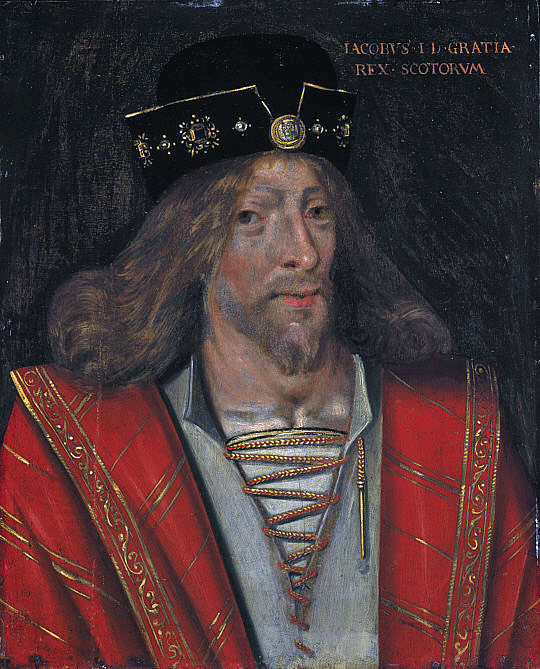
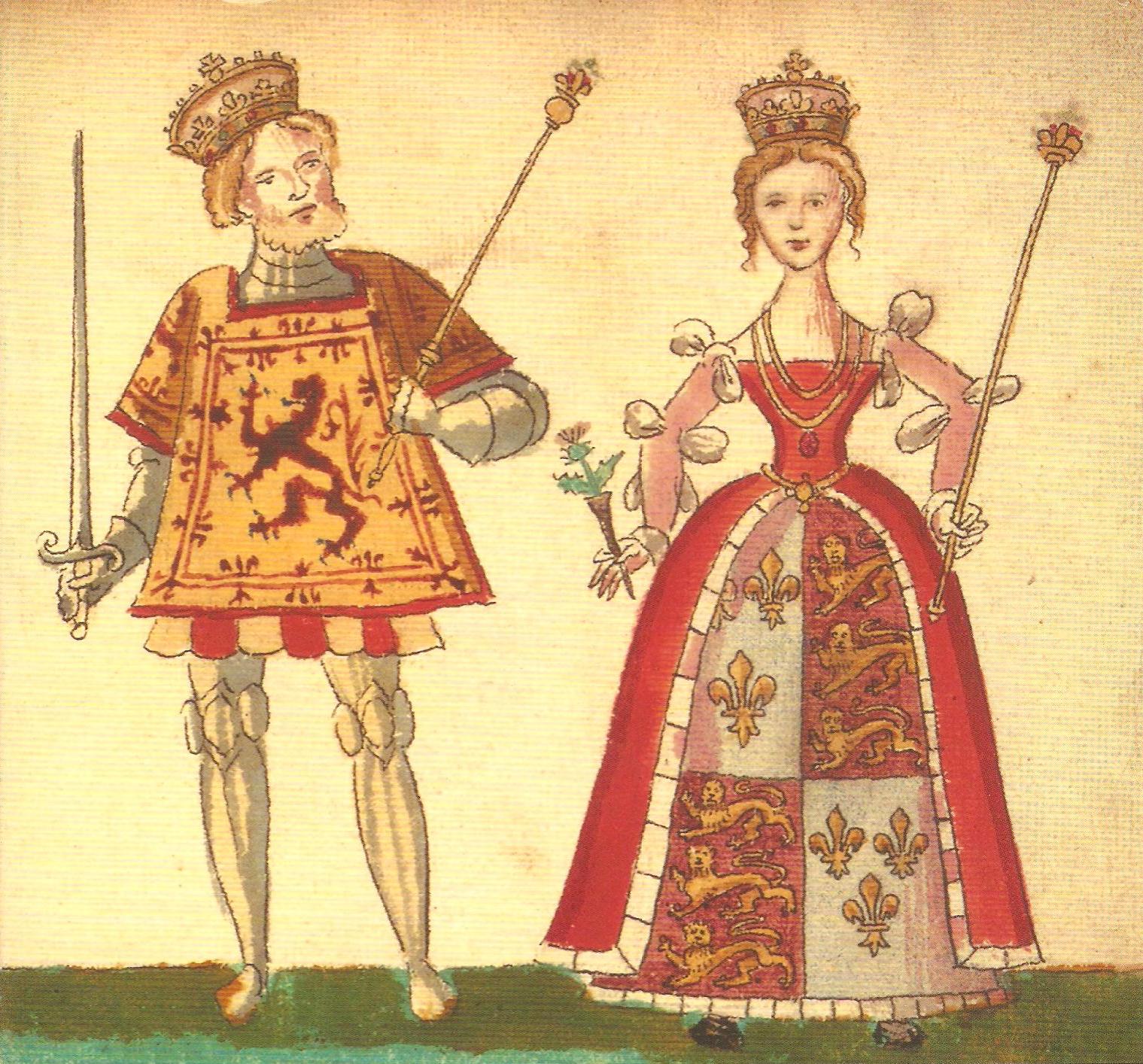
James I of Scotland (my 17th great-grandfather) was the son of King Robert III and Lady Annabella Drummond. He reigned 1406-1437, though from 1406 til 1424, he was king in name only. When his father sent him away as a child for his own protection, he was captured by the English and held in the Tower of London for 18 years. During his imprisonment, he fell in love with Joan Beaufort, and the two were married on February 2, 1424 in Southwark. They had 8 children together. James returned to Scotland to find his country in chaos. He was formally crowned on May 21, 1424 at Scone. He took immediate action to regain his authority and control, including executing the Albany family, his fiercest opponents. He ruled with a firm hand, achieving numerous legal and financial reforms, including remodeling the Scottish parliament after its English counterpart, and renewing the Auld Alliance with France. His actions, although very effective, upset many, namely the descendents of his grandfather, Robert II’s second marriage (James was descended from the first marriage). Conflict arose between the two factions over who should be on the throne. The problems came to a head when James was murdered by his uncle Walter, Earl of Athol, at Friars Preachers Monastery in Perth. The king was 42. James was a handsome, accomplished man, being a poet, singer, and musician as well as a talented athlete, excelling at shotput and hammer throw.
Lady Joan Beaufort and King James I of Scotland had eight children together they are:
- Margaret Stewart, Princess of Scotland (1424–1445) married Prince Louis, Dauphin of Viennois (later King Louis XI of France)
- Isabella Stewart, Princess of Scotland (1426–1494) married Francis I, Duke of Brittany
- Mary Stewart, Countess of Buchan (c.1428-1465) married Wolfart VI van Borsselen
- Joan of Scotland, Countess of Morton (c. 1428–1486) married James Douglas, 1st Earl of Morton
- Alexander Stewart, Duke of Rothesay (born and died 1430); Twin of James
- James II of Scotland (1430–1460) (my 16th great-grandfather) married Mary of Guelders in 1449
- Annabella Stewart, Princess of Scotland (c.1436-1509) married and divorced 1. Louis of Savoy, and then married and divorced 2. George Gordon, 2nd Earl of Huntly
- Eleanor Stewart, Princess of Scotland (1433–1484) married Sigismund, Archduke of Austria.
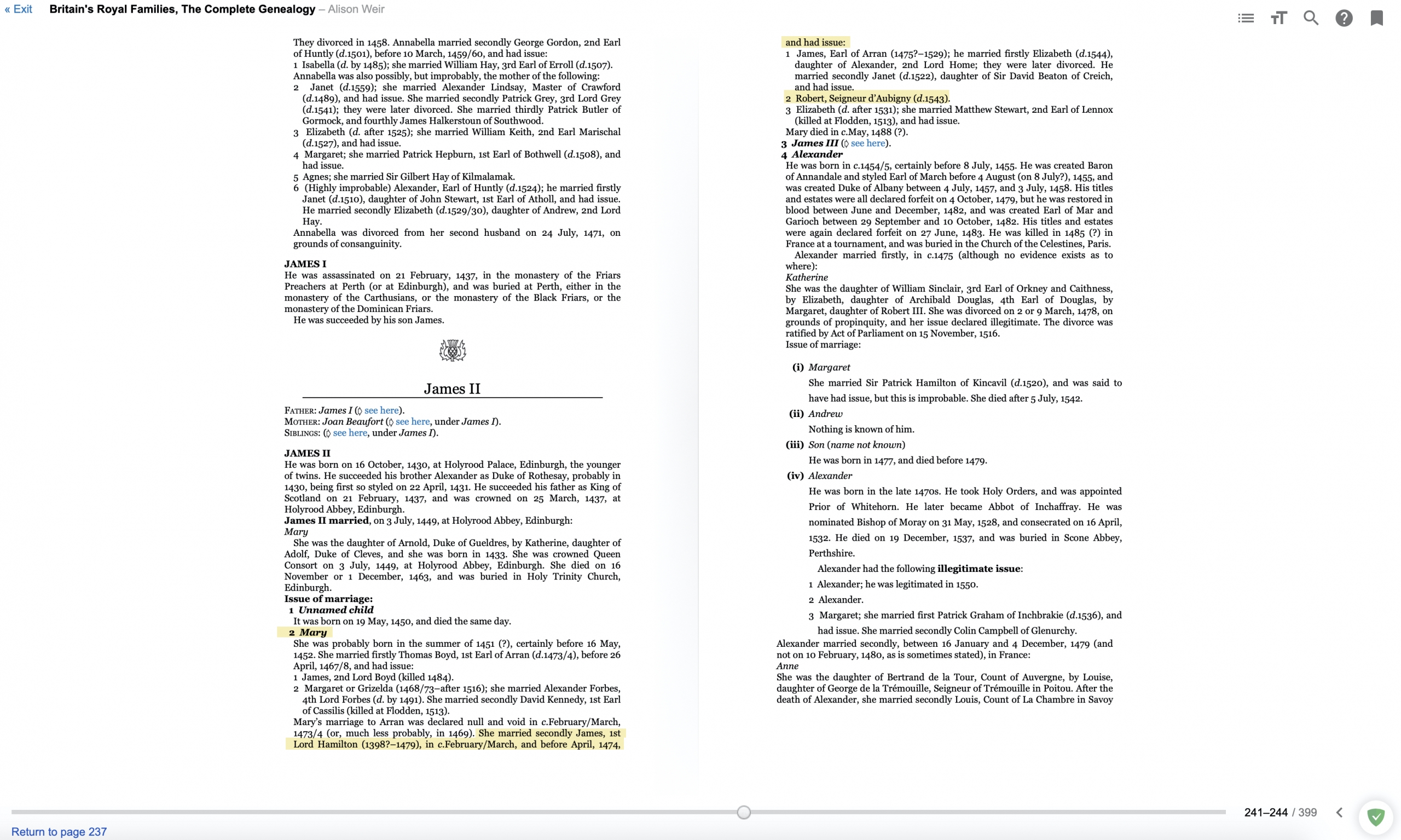
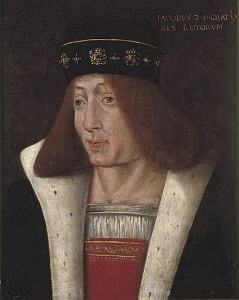
King James II of Scotland is my 16th great-grandfather, he was the only son of King James I of Scotland and Lady Joan Beaufort, Queen consort of Scotland. King James II succeeded to the throne at the age of six upon his father’s death. James’ father was assassinated on 21 February 1437 at Blackfriars monastery in Perth. His mother, Queen Joan, although hurt, managed to get to her six-year-old son, who was now king.
On 25 March 1437, he was formally crowned King of Scots at Holyrood Abbey. The Parliament of Scotland revoked alienations of crown property and prohibited them, without the consent of the Estates, that is, until James II’s eighteenth birthday. He lived along with his mother and five of his six sisters at Dunbar Castle until 1439. The oldest sister, Margaret, had left Scotland for France in 1436 to marry the Dauphin Louis (later King Louis XI of France).
From 1437 to 1439, the king’s first cousin Archibald Douglas, 5th Earl of Douglas, headed the government as lieutenant-general of the realm. After his death, and with a general lack of prominent earls in Scotland due to deaths, forfeiture or youth, political power became shared uneasily among William Crichton, 1st Lord Crichton, Lord Chancellor of Scotland (sometimes in co-operation with the Earl of Avondale), and Sir Alexander Livingston of Callendar, who had possession of the young king as the warden of the stronghold of Stirling Castle. Taking advantage of these events, Livingston placed Queen Joan and her new husband, Sir John Stewart, under “house arrest” at Stirling Castle on 3 August 1439. They were released on 4 September only by making a formal agreement to put James in the custody of the Livingstons, agreeing to the queen’s relinquishment of her dowry for his maintenance, and confessing that Livingston had acted through zeal for the king’s safety.
In 1440, in the king’s name, an invitation is said to have been sent to the 16-year-old William Douglas, 6th Earl of Douglas, and his younger brother, twelve-year-old David, to visit the king at Edinburgh Castle in November 1440. According to legend, they came and were entertained at the royal table, where James, still a little boy, was charmed by them. However, they were treacherously hurried to their doom, which took place by beheading in the castle yard of Edinburgh on 24 November, with the 10-year-old king pleading for their lives. Three days later Malcolm Fleming of Cumbernauld, their chief adherent, shared the same fate. The king, being a small child, had nothing to do with this. This infamous incident took the name of “the Black Dinner”.
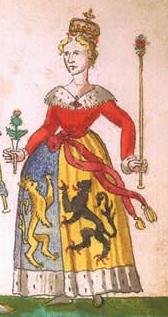
Negotiations for a marriage to Mary of Guelders began in July 1447, when a Burgundian envoy came to Scotland, and were concluded by an embassy under Crichton the chancellor in September 1448. Her great-uncle, Philip the Good, Duke of Burgundy, settled sixty thousand crowns on his kinswoman, and her dower of ten thousand was secured on lands in Strathearn, Athole, Methven, and Linlithgow. A tournament took place before James at Stirling, on 25 February 1449, between James, master of Douglas, another James, brother to the Laird of Lochleven, and two knights of Burgundy, one of whom, Jacques de Lalain, was the most celebrated knight-errant of the time. The marriage was celebrated at Holyrood on 3 July 1449. A French chronicler, Mathieu d’Escouchy, gives a graphic account of the ceremony and the feasts which followed. Many Flemings in Mary’s suite remained in Scotland, and the relations between Scotland and Flanders, already friendly under James I, consequently became closer.
In Scotland, the king’s marriage led to his emancipation from tutelage, and to the downfall of the Livingstons. In the autumn Sir Alexander and other members of the family were arrested. At a parliament in Edinburgh on 19 January 1450, Alexander Livingston, a son of Sir Alexander, and Robert Livingston of Linlithgow were tried and executed on the Castle Hill. Sir Alexander and his kinsmen were confined in different and distant castles. A single member of the family escaped the general proscription—James, the eldest son of Sir Alexander, who, after arrest and escape to the highlands, was restored in 1454 to the office of chamberlain to which he had been appointed in the summer of 1449.


Together James and Mary had seven children:
- Unnamed Son (b. and d. 1450) (stillborn)
- James III of Scotland (1451-1488) (heir to the scottish throne and ancestor of Mary, Queen of Scots)
- Princess Mary Stewart, later the Countess of Arran and Lady Hamilton (b.1453-d.1488) married 1st to Thomas Boyd, 1st Earl of of Arran and 2ndly to James Hamilton, 1st Lord Hamilton (15th great-grandmother). I descend by her 2nd husband, James Hamilton, 1st lord Hamilton
- Alexander Stewart, Duke of Albany (b. 1454 and d. 1485)
- David Stewart, Earl of Moray (b.1455-d.1457)
- John Stewart, Earl of Mar (b.1456-d.1479)
- Princess Margaret Stewart (b.1457-d.unknown)
Mary Stewart, Princess of Scotland and Countess of Arran, my 15th great-grandmother was born on May 13, 1453 in Stirling Castle to James II and Mary of Guelders. By the time she was 10 she was an orphan, her father James II died of a cannon explosion and Mary died young as well. At 13 she was married off to her first husband Thomas Boyd and she was given the Isle of Arran as her dowry, just what everyone teen girl needs, her own island. While Thomas went off to Denmark to bring his royal brother in laws new wife to him James was turned against him. Mary met her husband as the ship docked and they ran off to Denmark together. In 1469 he was charged with treason and all his lands and titles were forfeited to the crown. Mary ran back to Scotland to plead for her husband and the father of her two children but instead her brother, King James III of Scotland imprisoned her and annulled her marriage in 1473.
In 1474 she married again, this time to a man 40 years her senior, James Hamilton, 1st Lord Hamilton. In 1476 they received a Papal dispensation for the marriage which legitimized their eldest two children already born to them, together James and Mary had three children:
- James Hamilton, 1st Earl of Arran (b. 1475 – d. 1529), married firstly in 1490 Elizabeth Home by whom he had two daughters; he divorced Elizabeth in 1504. He married secondly in 1516, Janet Bethune, daughter of Sir David Bethune, 1st of Creich and Janet Duddlingston, by whom he had three children including his heir, James Hamilton, Duke of Châtellerault, 2nd Earl of Arran (c.1516- 22 January 1575), heir presumptive to the Kingdom of Scotland (2 July 1536 – 22 May 1540), (April 1541- 8 December 1542), (14 December 1542 – 19 June 1566), and (29 July 1567 – 22 January 1575); Regent of Scotland (1542–1554).
- Hon. Elizabeth Hamilton (died after April 1531), married on 9 April 1494, Matthew Stewart, 2nd Earl of Lennox, by whom she had issue. The Stewarts of Lennox, of whom Henry Stuart, Lord Darnley, the second husband of Mary, Queen of Scots, was the most notable, who derived his claim to the Scottish throne from Elizabeth’s son John Stewart, 3rd Earl of Lennox.
- Robert Hamilton, Seigneur d’Aubigny (b. March 21st 1476 – d. 1543). (my14th great-grandfather) He was born at Brodick Castle, Isle of Arran, Scotland. He died in 1543 in Torrance, Lanarkshire, Scotland, when he was 66 years old. According to some records, he married (Elizabeth?) Campbell, the daughter of Campbell (Goodman) of Glaister, or Glacester (Angus), the niece of the Sheriff of Ayr [the latter of whom also had connection to the earls of Lennox]. They had at least two (claimed) children:
- Janet Hamilton, born in 1500, who wed Alexander Burnett, 4th Baron & 9th Laird of Leys (my 13th great-grandmother)
- Matthew Hamilton, born in 1512, who wed Jean Muirhead of Torrence.
My 13th great-grandmother, Lady Janet Hamilton was the daughter of Robert Hamilton, Seigneur d’Aubigny and Lady Elizabeth Campbell(?). Robert Hamilton was the youngest son and last child of Princess Mary Stewart and James Hamilton, 1st Lord Hamilton of the House of Hamilton.

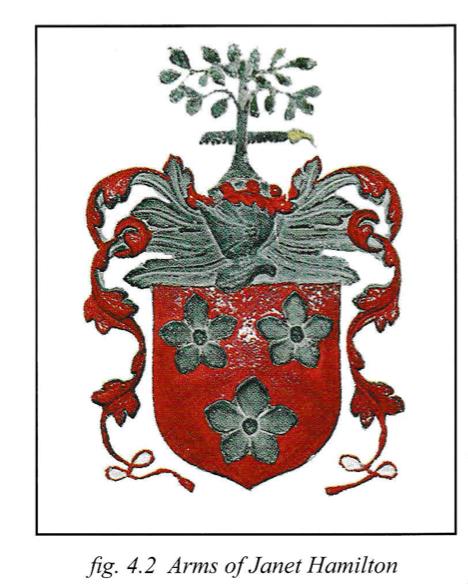
In 1521, Lady Janet Hamilton met and married Alexander Burnett, 4th Baron and 9th Laird of Leys and because of Janet Hamilton wealth the couple was able to begin construction of Crathes Castle which wasn’t completed until 1596, by their eldest grandson, Alexander Burnett, 12th Laird of Leys.
Together Alexander and Janet had eleven children:
- John Burnett, 10th Laird of Leys (my 12th great-grandfather)
- Master Thomas Burnett (d.1582)
- Andrew Burnett of Cowcardie m. Elizabeth Melville
- William Burnett of Slowy m. Janet/Janis Chalmers
- Alexander Burnett of Kynneskie m. Elizabeth Chalmers, sister of Janet/Janis Chalmers, mentioned above.
- Archibald Burnett m. possibly to Mariore/Marjorie Chalmers.
- James Burnett of Cardney
- Isabel Burnett of Leys m. Hon. Robert Arbuthnott of Pitcarlies and Little Fiddies (they were the parents of the Hon. Katherine Arbuthnot of Fiddies, wife of Alexander Burnett , 11th Laird of Leys).
- Janet Burnett m. Master James Skene of Wester Corse and Ramore.
- Agnes Burnett m. Alexander Blackhall of Barra
- Isobel Burnett m. John Forbes of Sonnahinny/Sunjunny.
In 1574, John Burnett became the 10th Laird of Leys on the death of his father, Alexander Burnett, 9th Laird of Leys and inherited Crathes Castle.
John Burnett, 10th Laird of Leys, m. Elizabeth Lumsden and they had six children together:
- Alexander Burnett, 11th Laird of Leys m. Hon. Katherine Arbuthnott of Fiddies, mentioned above. (they were first cousins). (my 11th great-grandparents)
- Margaret Burnett m. Arthur Forbes of Echt.
- John Burnett of Daladies m. Agnes Turnbull.
- Andrew Burnett of Sheddocksley
- Thomas Burnett. Merchant.
- Katherine Burnett.

My 11th great-grandfather, Alexander Burnett, 11th Laird of Leys m. Hon. Katherine Arbuthnott of Fiddies in 1560. Together they had nine children:
- Alexander Burnett, heir to his father, later became the 12th Laird of Leys m. Katherine Gordon, eldest daughter of Alexander Gordon of Lesmoir, he inherited Crathes Castle and completed the construction of the castle in 1596.
- Robert Burnett
- Dr. Thomas Burnett Sr. of Leys (b. 1570) m. Jane Foys of London, England in 1611. – Dr. Thomas received his masters of doctorate degree from the University of Cambridge. (my 10th great-grandfather)
- Gilbert Burnet, Professor of Philosophy at Basle. (has no issue)
- Duncan Burnett m. Jane Marsham, daughter of Robert Marsham of Norfolk, England.
- John Burnett m. Helen Wood.
- Janet Burnett m. Gilbert Keith of Auquhorsk
- Margaret Burnett (b. 1566)
- Elizabeth Burnett m. Master Gilbert Skene


Dr. Thomas Burnett Sr. of Leys (my 10th great-grandfather), the 3rd son of Alexander Burnett, 11th Laird of Leys and the Hon. Katherine Arbuthnott of Fiddies was born at Crathes Castle in Aberdeenshire, Scotland. He received his master degree from the University of Cambridge and soon after graduation he went to Braintree, England to set his practice there during this time he met Jane Foys, daughter of John Foys of London, England, they were married in 1611 and they had three children together:
- Thomas Burnett Jr. of Leys (b. 1612) (my 9th great-grandfather) m. Mary Cooper in 1645.
- Alexander Burnett of Leys (b. 1613) in Braintree, England.
- Frances Burnett of Leys (b. 1614) m. Rev. Thomas Templer, Rector of Weston, Northampton, England in 1642.


My 9th great-grandfather, Thomas Burnett Jr. of Leys. (b.1612) the eldest son of Dr. Thomas Burnett Sr. of Leys and Jane Foys of London, England was given permission by his father to travel to the new world aka The America to settle up roots there. (currently there is only one gateway ancestor in my family tree that descends from royalty and nobility and that is of Thomas Burnett Jr. that can be confirmed by a paper trail using primary sources and DNA to match with other children of Thomas Burnett Jr and Mary Cooper’s descendants.)
In 1643, Thomas Burnett Jr., according to Southampton Town Records. He he took up a lot there and married Mary Cooper, and together they raised their eleven children. Thomas died in Riverhead, Suffolk on Long Island in 1684

Thomas Burnett Jr. of Leys and Mary Cooper had eleven children together:
- Lot Burnett of Leys m. Phebe Mills on October 20th 1675 in Southampton, NY
- Joel Burnett of Leys
- Lois Burnett of Leys m. Robert Collins
- John Burnett of Leys (b.1645) m. Mary (surname unknown) died in 1694.
- Priscilla Burnett of Leys (b. 1657) (my 8th great-grandmother) m. Samuel Fithian Sr. on March 6th 1679 at Greenwich Presbyterian Church in Salem County, NJ
- Hester Burnett of Leys (b.1653) m. Christopher Leaming in 1674.
- Aaron Burnett of Leys (b.1655) m. Elizabeth Taylor (not the actress Elizabeth Taylor) he died in September of 1735 in Morris County, NJ
- Miriam Burnett of Leys (b. 1656) m. Lt. Enoch Fithian, brother of Samuel Fithian Sr. my ancestor (see above) Lt Enoch Fithian and Miriam were married on June 25th 1675 in East Hampton on Long Island, NY
- Dan Burnett of Leys (b. 1664) m. Abigail (surname unknown) and Elizabeth (surname unknown) he died on July 8th 1729.
- Mordecai Burnett of Leys (b.1670) m. Hannah (surname unknown) he died in Elizabethtown, NJ
- Capt. Matthias Burnett of Leys (b. 1674) m. Elizabeth Osborne. He died on October 4th 1765.

My 8th great-grandmother, Priscilla Burnett of Leys was born in 1657 in Southampton on Long Island, her parents were Thomas Burnett Jr. of Leys. and Mary Cooper, daughter of John Cooper Sr. and Wilbroe Griggs.
Priscilla’s father Thomas Burnett Jr. of Leys was known to be a very stubborn man and was very generous with money and he would often get in to family fights especially with his in-laws (more on that later), but his wife, Mary Cooper stood her ground against her father’s wishes and later was omitted from his father’s will as a result of this. Thomas Burnett Jr. was also the town’s overseer for the poor according to the early records of Town of Southampton.
Not much is known about Priscilla’s early life, however it is known that she met her future, husband Samuel Fithian Sr. in the area where she grew up and they both decided to move together to Salem County, New Jersey to set up a new life and roots there and on March 6th 1679 the couple were finally married at Greenwich Presbyterian Church and they went on to have seven children together
My 8th great-grandparents, Samuel Fithian Sr. and Priscilla Burnett of Leys made their home church at Greenwich Presbyterian Church, Cumberland County, NJ and the birth of their 7 children is recorded there as follows:
- John Fithian (b. September 1st 1681)
- Josiah Fithian Sr. (b. May 6th 1685) m. Sarah Dennis on November 7th 1706 and had:
- John Fithian (b. May 5th 1709)
- Jeremiah Fithian (b. April 5th 1713)
- Samuel Fithian (b. October 12th 1715)
- Hannah Fithian (b. November 5th 1718)
- Esther Fithian (b. April 12th 1721)
- Joseph Fithian (b. August 12th 1724)
- Sarah Fithian (b. September 20th 1728) (twin)
- Josiah Jr. Fithian (b. September 20th 1728) (twin)
- Samuel Fithian Jr. (b. April 17th 1688)
- Esther Fithian (b. March 6th 1691) m. Robert Tullis Sr. in 1714 (my 7th great-grandmother)
- Francis Tullis (b. June 5th 1715)
- William Tullis Sr. (b. June 5th 1715) (my 6th great-grandfather) m. 1st to Eleanor Denton and then 2ndly to Mary Platts, daughter of Moses Platts.
- Ann Tullis (b. September 13th 1739) by Eleanor Denton
- William Tullis Jr. (b. August 22nd 1742) by Eleanor Denton
- John Tullis (b. February 18th 1745) by Eleanor Denton
- Daniel Tullis (b. September 3rd 1747) by Eleanor Denton
- Moses Tullis (b. May 15th 1752) by Mary Platts
- Mary Tullis (b. August 23rd 1756) by Mary Platts. Mary Tullis m. Arthur Davis. (had issue)
- Eleanor Tullis (b. January 1st 1759) by Mary Platts
- Eli Tullis (b. August 19th 1761) by Mary Platts
- Ruth Tullis (b. October 8th 1763) by Mary Platts. Ruth Tullis m. Joseph Fauver (had issue)
- Annah Tullis (my 5th great-grandmother) (b. August 2nd 1765) by Mary Platts. Annah m. 1) Cornelius Garrison (d. December 4th 1794) and 2ndly to Seeley Blew.
- Robert Tullis Jr. (b. 1723 and d. 1784)
- Moses Tullis Sr. (b. 1724) m. Elizabeth Van Dyke
- Priscilla Tullis (b. 1725)
- Matthias Fithian (b. February 3rd 1694)
- William Fithian (b. March 25th 1698)
- Isaac Fithian (b sometimes before 1702) he was named in his father’s will.

My 5th great-grandmother, Annah Tullis was the youngest daughter and last child of my 6th great-grandfather, William Tullis Sr. by his 2nd wife, Maty Platts.
Annah Tullis was married two times first to Cornelius Garrison, my 5x great grandfather. Cornelius died young in December of 1794, by this marriage they had several kids. One of them is my 4th great-grandmother, Eleanor Garrison.
The children of Cornelius Garrison and Annah Tullis are:
- Eleanor Garrison (b. 1780 – c.1853) m. John Griner Sr. in 1807 (had issue) (my 4th great-grandmother)
- Eli Garrison Sr.
- Mary Garrison m. John Steward Sr.
- Elizabeth Garrison m. William Biggs

According to the heirs of the estate of Cornelius Garrison see below these are the names of the tenants and heirs :
My 4th great-grandmother, Eleanor “Nellie” Garrison was one of the daughter of Annah Tullis and Cornelius Garrison, her father Cornelius died when she was a teenager in December of 1794 and on March 8th 1797 her mother had remarried for the second time to Seeley/Selah Blue/Blew and has children by him:
- William Blew/Blue (b. 1799) (had issue)
- Curtis Blew/Blue (b.1808) (had issue)

My 5th great-grandmother, Anna Blew, age d 85 (b. 1765) was alive by the 1850’s federal census for Bridgeton, New Jersey. in 1850 she was listed in the household living with one of her sons Curtis Blew (b. 1808) age 42 with his, wife Elizabeth aged 41 with four of their children: Seeley aged 16, Miriam aged 12, Abraham aged 10 and Eunice aged 6. and just two doors down the same street is her other son, William Blew/Blue aged 51 (b.1799) with his wife, Mary aged 37, with their five children: Hannah aged 20, Ruth aged 13, Elizabeth aged 11, William aged 7 and Ida aged 1 and a Daniel Loder, a relative of my 3rd great-grandmother, Rachel Loder who married Eli Griner Sr. in 1837. Eli Griner is one of Anna Blew’s grandchildren by her first husband Cornelius Garrison who died in 1794. and in 1858, Anna Blew died at the age of 92.
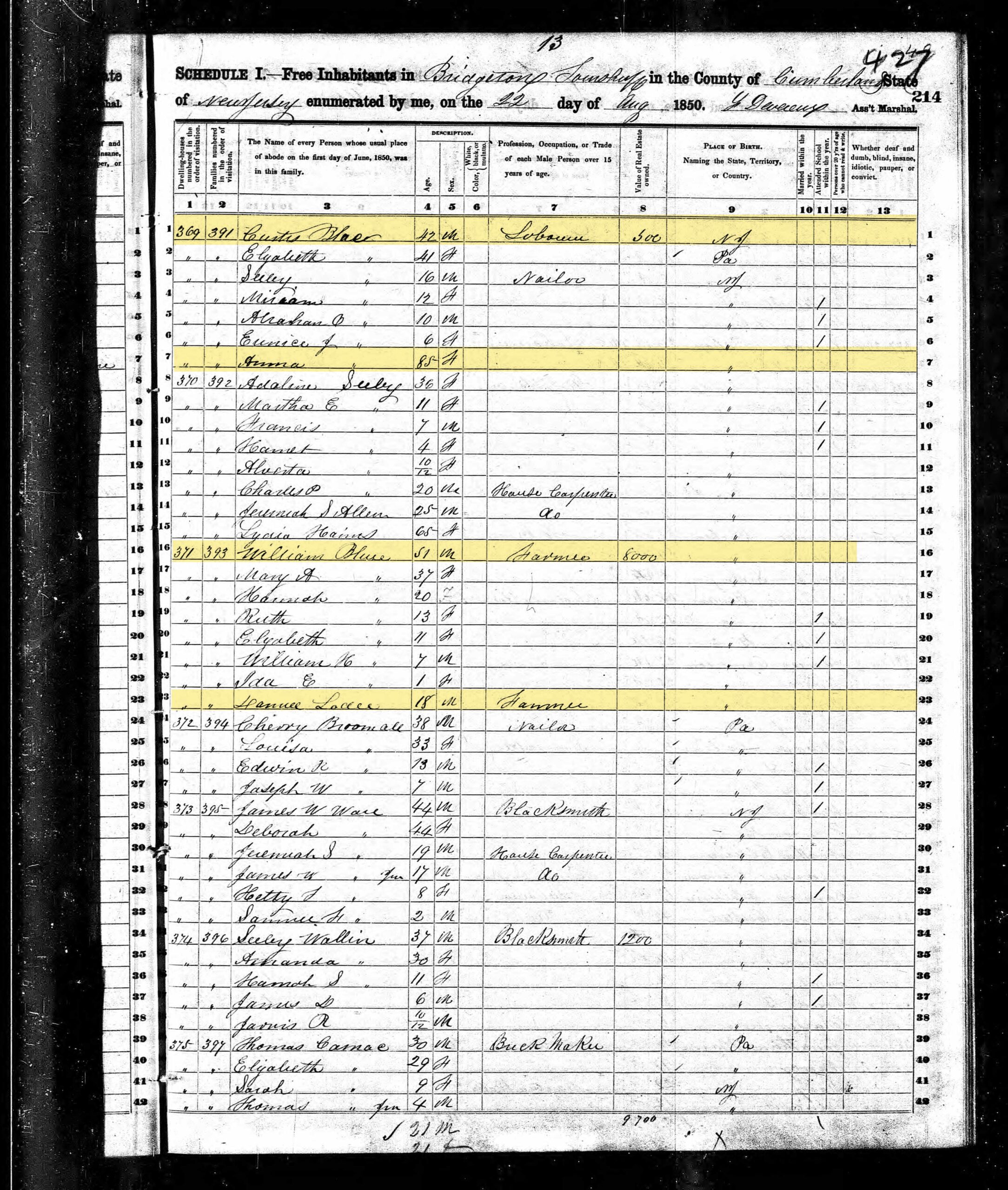
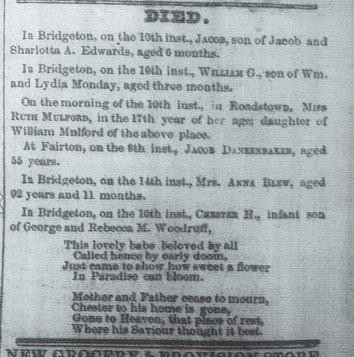
My 4th great-grandmother, Eleanor Garrison married John Griner Sr. by 1807 and had seven children by him:
- Barrett Griner (b. 1811 – d. July 7th 1896) m. Mary Elizabeth Adams (had issue)
- John Griner Jr. (b. 1812) m. Charlotte Loder
- Rebecca Griner (b. 1814) m. James Camm
- Eli Griner Sr. (b. 1816 and d. by 1865-1870) m. Rachel Loder on September 27th 1837 (3rd great-grandfather)
- Elias Griner (b. 1820) m. Sarah Ann Cobb
- Elizabeth Griner (b.1821)
- Mary Griner (b.?)
My 3rd great-grandfather, Eli Griner Sr. (b. 1816 and died by 1865) and his wife, Rachel Loder were married on September 25th 1837 in Deerfield, Cumberland County, NJ and had children:
- John B. Griner Sr. (b.1838- d.1890)
- Francis M. Griner (b.1840 – d. March 14th 1890) m. Margaret Pullinger (had issue)
- Elias Griner (b. June 14th 1843 – d. May 2nd 1937) m. Mary M. Seeds and 2ndly to Christina P. Garton (had issue)
- Eli Griner Jr. (b. 1845 – d. 1860) died young
- Martin Griner (b. 1849 – d. 1860) died young
- Ephraim Griner (b. 1859 – d. 1880)
- Louis Eli Griner (b 1861 – d. October 28th 1895) m. Emily Berdeaux in 1886 (had issue) (my 2nd great-grandfather)
- Lydia E. Griner (b. 1862 – d. 1930)

My 2nd great-grandfather, Louis Griner was born in Philadelphia, Pennsylvania in 1861. His birth date has yet to be found this is because the State of Pennsylvania doesn’t require birth to be recorded by law until 1910.
Researching my maternal great-grandfather Charles Griner’s line was a brick wall until Ancestry DNA testing became available in 2012. It took me many years to finally locate the actual records of the marriage and death record of my maternal, 2nd great-grandfather and with the assistance of Carol who, lives St. Charles, MO reached out to me by emailing me on Ancestry.com asking if I was related to an Ida Griner who married name was Gasser. I told her at that time that i don’t know cause I never heard of an Ida Griner while I was growing up.. I told her that I knew that my great-grandfather, had an older brother named Alfred Terrance Griner, who died young. so, Carol decided to volunteered and assist me in my research to see if she could find the burial location of my 2nd great-grandfather, near her area and she successfully found it. Louis Griner is buried with his son and wife at Walnut Hill Cemetery in Belleville, St. Clair County, Illinois.
Louis died young on October 28th 1895 due to typhoid malaria fever at the age of 30. He left behind his wife, Emily and his three children.
Together Louis Griner and Emily Berdeaux (b. July 27th 1864 – January 5th 1929) had three children:
- Alfred Terrence Griner (b.1886 – d.1928) m. Mary Elizabeth Flynn (had issue)
- Charles Berdeaux Griner (b. September 8th 1889 – d. October 19th 1964) married Anna Gertrude McAllister (b. September 11th 1887 – d. December 28th 1953) on October 14th 1917 and had issue. (my maternal great-grandfather)
- Mabel Emily Griner (b. March 14th 1920 – d. April 29th 1998) (my maternal grandmother)
- Ida Marion Griner (b. October 1st 1891 – d. January 28th 1960) married George Martin Gasser Sr. (had issue)
My maternal grandmother, Mabel Emily Griner was born at home. She met her future husband, George Ognan in NYC while she was visiting her maternal aunt, Mabel Elizabeth McDonald whom she was named after, her aunt Mabel was my maternal great-grandmother’s half sister. Mabel and George were married on June 3rd 1950 and had issue.
- Nancy Marie Ognan (b. May 11th 1953 – d. July 16th 2000) married Donald Frederick Sturm (b. December 1st 1953 – d. September 30th 2005) on April 5th 1975 and they divorce on September 28th 1988. and had issue. They were high school sweethearts (my mother)
- Anne Marie Sturm (b. October 9th 1981)
- Stephanie Marie Sturm (b. October 9th 1981 – d. June 30th 2002)
- Richard Ognan (still living) (had issue)

